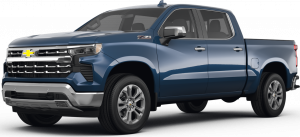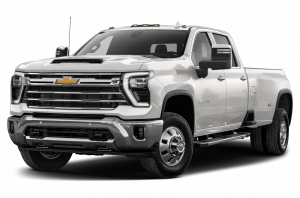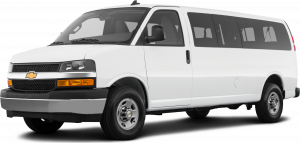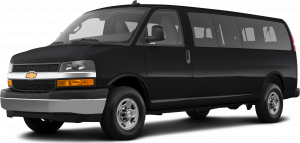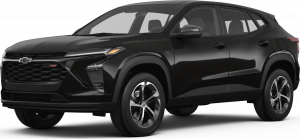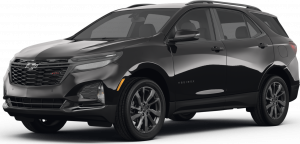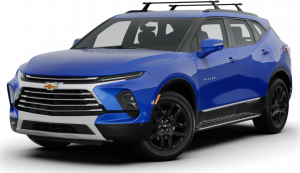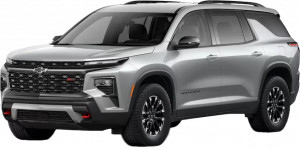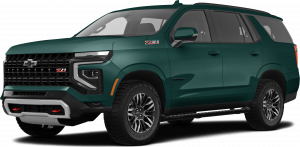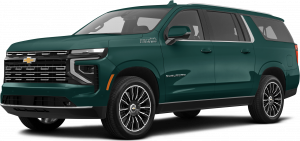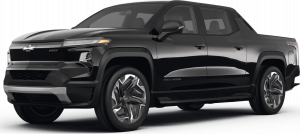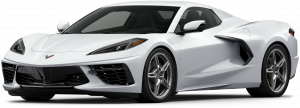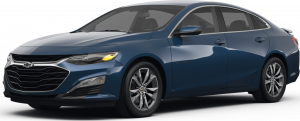Chevrolet Safety Features That Protect Redlands Drivers

Driving in Redlands presents its unique set of challenges, from navigating bustling city streets to traversing winding mountain roads. Chevrolet's commitment to safety is reflected in the specialized features designed to handle these local conditions, ensuring that every journey is as safe as it is enjoyable.
Chevrolet's Safety Features to enhance Redland's local driving conditions
| Category | Description | |
|---|---|---|
| Active Safety Features (Preventative Measures) | Automatic Emergency Braking (AEB) | Uses sensors to detect potential collisions and apply brakes automatically. |
| Forward Collision Alert (FCA) | Warns driver of potential frontal collisions. | |
| Lane Departure Warning (LDW) | Alerts driver of unintentional lane departure. | |
| Lane Keep Assist (LKA) | Steers vehicle back into lane if it detects unintentional lane departure (builds upon LDW). | |
| Blind Spot Monitoring (BSM) | Detects vehicles in driver's blind spot and provides a warning. | |
| Rear Cross Traffic Alert (RCTA) | Warns driver of vehicles approaching from the rear when backing up. | |
| Adaptive Cruise Control (ACC) | Maintains set following distance from the vehicle ahead. | |
| High Beam Assist (on some models) | Automatically switches high beams based on surrounding traffic. | |
| Passive Safety Features (Protection During a Collision) | Airbags | Multi-stage airbags deploy to cushion occupants and mitigate injuries. |
| Seatbelts with Pre-Tensioners and Load Limiters | Seatbelts tighten automatically and manage tension to restrain occupants. | |
| Strong Body Structure | High-strength steel safety cage absorbs impact energy and protects occupants. | |
| Additional Safety Features | Tire Pressure Monitoring System (TPMS) | Alerts driver if a tire is underinflated. |
| Teen Driver Mode (on some models) | Allows parents to set limitations on vehicle functions to promote safe driving for new teenage drivers. | |
| Rearview Camera | Provides a clear view behind the vehicle while backing up. | |
| Chevrolet MyLink (OnStar) with Emergency Services (on some models) | Connects you to emergency responders in critical situations (subscription required). | |
Chevrolet Safety Shield: A Guardian Angel on the Road
Chevrolet prioritizes your safety on every journey. Equipping their vehicles with a suite of advanced driver-assistance technologies, they've created a virtual shield that not only protects you in the event of a collision but also actively works to prevent accidents from happening in the first place. Let's delve into some of these key features and understand how they work to keep you safe behind the wheel.
Imagine this: you're stuck in stop-and-go traffic, lost in thought for a moment. The car in front of you suddenly brakes abruptly. Without AEB, a collision might seem inevitable. This is where AEB comes to your rescue. Using a combination of radar and/or camera sensors, AEB constantly monitors the traffic ahead. If the system detects a potential frontal collision with a slower moving or stopped vehicle and determines you're not reacting fast enough, it automatically applies brakes to help avoid an impact or significantly reduce its severity. AEB serves as an extra set of eyes, reacting in milliseconds to situations you might miss due to distraction or fatigue.
Not all situations require AEB's automatic intervention. Sometimes, a gentle nudge is all it takes to avert disaster. This is where Forward Collision Alert (FCA) shines. FCA acts as an early warning system, constantly scanning the road ahead with sensors. If it detects a potential collision with a vehicle ahead, it triggers an audible or visual alert, giving you ample time to react. Imagine an FCA warning prompting you to brake or swerve slightly, allowing you to avoid a collision altogether.
By providing valuable pre-collision warnings, FCA empowers you to take control and prevent an accident from happening in the first place.
Multilane highways offer a sense of ease, but they can also lull you into a false sense of security. Drowsy driving or a momentary lapse in focus can cause you to drift out of your lane unintentionally. Lane Departure Warning (LDW) acts as a guardian against unintentional lane departures. Using lane markers or road edge lines as reference points, LDW triggers an audio or visual alert if it detects your vehicle straying from its lane without the turn signal activated. This timely warning allows you to correct your course and get back on track.
Lane Keep Assist (LKA) takes lane departure prevention a step further. Building upon LDW's warnings, LKA gently applies steering torque to guide your vehicle back into its lane if it detects an unintentional lane departure. Imagine a gentle nudge on the steering wheel, prompting you to make the necessary correction. While LKA doesn't overpower the steering wheel, it provides a subtle but crucial corrective action, keeping you safely within your lane.
Blind Spot Monitoring (BSM) and Rear Cross Traffic Alert (RCTA)
Our field of vision has natural limitations, and dangerous blind spots exist on either side of our vehicles. These areas can easily hide approaching cars or motorcycles, posing a significant risk when changing lanes. Blind Spot Monitoring (BSM) tackles this challenge head-on, acting as an extra set of eyes that constantly monitor these hidden zones. The system typically utilizes radar sensors embedded within the vehicle's rear bumper or quarter panels. These sensors emit radio waves that scan for objects approaching or already present in your blind spots. If a vehicle is detected within the pre-defined blind spot zone, BSM triggers a visual alert, often an illuminating icon on the side mirror or a light on the A-pillar (the pillar supporting the windshield). This immediate notification makes lane changes a safer maneuver, giving you the awareness to wait for a clear path before initiating the move. BSM significantly reduces the risk of accidents caused by merging into vehicles you couldn't see in your mirrors. Backing out of a parking spot can be nerve-wracking, especially in busy parking lots where visibility might be limited. Rear Cross Traffic Alert (RCTA) eliminates this anxiety by providing a crucial layer of safety when reversing. Similar to BSM, RCTA utilizes radar sensors, typically located in the vehicle's rear bumper or taillights. These sensors scan for oncoming traffic from the sides as you reverse. If an approaching vehicle is detected within a certain zone, RCTA triggers audible and visual alerts, such as a warning chime and flashing lights on the dashboard or instrument cluster. This timely notification allows you to stop your vehicle and avoid a potential collision with a car you might have missed while looking over your shoulder. RCTA is particularly beneficial in situations with limited rear visibility, like backing out of a driveway with parked cars on either side or navigating a busy parking lot with high traffic flow.
Adaptive Cruise Control (ACC): Effortless Control on Long Journeys
Highway driving can be monotonous, especially on long stretches of road. Maintaining a consistent speed and following distance can become tedious, leading to fatigue and potentially unsafe situations. Adaptive Cruise Control (ACC) alleviates this burden by automating these tasks, promoting a more relaxed and safer driving experience. ACC utilizes a forward-facing radar or camera sensor to detect the vehicle ahead and maintain a pre-set following distance. The system then automatically adjusts your vehicle's speed to seamlessly adapt to changes in the flow of traffic. For instance, if the car in front of you slows down, ACC will gradually decrease your speed to maintain the set distance. Conversely, if the traffic clears, ACC will accelerate your vehicle back to your desired cruising speed. This eliminates the need for constant manual adjustments on the gas pedal, reducing driver fatigue and improving focus on the road. Additionally, ACC can contribute to smoother traffic flow, as vehicles maintain consistent spacing, minimizing the risk of sudden stops and accidents.
Nighttime driving requires optimal visibility to navigate safely. However, constantly switching between high and low beams can be inconvenient and might even momentarily blind oncoming drivers. High Beam Assist automates this process, ensuring you have the best possible visibility while maintaining courtesy towards other drivers. A camera mounted on the windshield detects the headlights of oncoming vehicles or taillights of the car in front. When no vehicles are within a certain range, High Beam Assist automatically switches your headlights to high beams, maximizing illumination of the road ahead. Conversely, when the system detects approaching traffic, it seamlessly switches back to low beams, preventing you from blinding other drivers. This intelligent system offers the perfect balance of clarity and courtesy, ensuring you see the road ahead clearly while ensuring the safety and comfort of oncoming drivers.
Airbags: A Split-Second Shield in a Moment of Impact
Airbags are perhaps the most recognizable passive safety feature. These life-saving cushions inflate within milliseconds of a collision, deploying from panels within the steering wheel, dashboard, seats, and sometimes even the roof pillars. Modern airbags utilize sophisticated sensors and algorithms to determine the severity of the impact and deploy the appropriate airbag(s) in a staged sequence.
For example, in a frontal collision, the driver's and passenger's frontal airbags will inflate first, creating a protective barrier between the occupants and the dashboard or steering wheel. Side airbags located in the seats may deploy alongside them, offering additional torso protection. The split-second deployment of airbags absorbs a significant amount of impact energy, cushioning occupants and reducing the risk of serious injuries like head trauma, chest injuries, and broken bones. Airbags work in conjunction with seatbelts, another crucial passive safety feature.
Seatbelts with Pre-Tensioners and Load Limiters: The Foundation of Occupant Restraint
Seatbelts are the first line of defense in a collision, restraining occupants and preventing them from being thrown from the vehicle. Modern Chevrolet vehicles come equipped with advanced seatbelt technology that goes beyond the basic webbing. Pre-tensioners are intelligent mechanisms integrated into the seatbelt system. In the event of a collision, sensors detect the impact and trigger the pre-tensioners, which automatically tighten the seatbelt within milliseconds. This eliminates slack in the belt, ensuring occupants are securely held in place before significant impact forces occur. Seatbelts also incorporate load limiters. These devices manage the tension applied to the belt during a collision. While pre-tensioners ensure occupants are properly restrained, load limiters prevent excessive force from being exerted on the chest and abdomen, reducing the risk of seatbelt-related injuries. The combined action of pre-tensioners and load limiters ensures optimal occupant restraint during a collision, maximizing the effectiveness of seatbelts.
The foundation of a vehicle's passive safety system is its body structure. Chevrolet vehicles are engineered with a high-strength steel safety cage designed to absorb and distribute impact energy in a controlled manner. This cage is comprised of crumple zones, strategically designed areas in the front and rear of the vehicle that collapse upon impact. These crumple zones absorb the brunt of the collision energy, preventing it from transferring directly to the passenger compartment. The passenger compartment itself is a reinforced zone designed to maintain its integrity during a crash, protecting occupants from intrusions from outside objects. By strategically combining high-strength steel with crumple zones and a reinforced passenger compartment, Chevrolet's body structure acts as the first line of defense in a collision, minimizing the impact forces experienced by occupants.
While Chevrolet's driver-assistance technologies prioritize accident prevention, passive safety features come into play as a last line of defense. Airbags, seatbelts with pre-tensioners and load limiters, and a strong body structure work together seamlessly in the event of a collision, absorbing impact energy and minimizing injuries to occupants. These invisible guardians within your Chevrolet offer peace of mind, knowing that you and your passengers are surrounded by multiple layers of safety, even in the face of an unexpected collision.
Tire Pressure Monitoring System (TPMS): The Silent Guardian of Stability
Our tires are the sole point of contact between the vehicle and the road, and maintaining proper tire pressure is crucial for optimal handling and safety. Underinflated tires can significantly impact a car's performance, reducing fuel efficiency, increasing stopping distances, and affecting handling, especially during cornering or sudden maneuvers. However, detecting underinflation can be challenging without physically checking each tire pressure gauge. This is where the Tire Pressure Monitoring System (TPMS) comes in.
Most Chevrolet vehicles are equipped with TPMS, a system that constantly monitors the air pressure in each tire using sensors mounted within the valve stems. If a tire falls below the recommended pressure by a designated threshold, the TPMS triggers a warning light on the dashboard, alerting you to the issue. This timely notification allows you to address the underinflation before it compromises your vehicle's handling or safety. By keeping your tires properly inflated, TPMS ensures optimal vehicle performance, minimizes the risk of tire blowouts, and contributes to a safer driving experience.
Teen Driver Mode: Empowering Safe Habits for New Drivers
The transition to becoming a new driver can be both exciting and nerve-wracking for teenagers and their parents. Teen Driver Mode, available on select Chevrolet models, offers a unique solution that promotes safe driving habits from the very beginning. This customizable feature allows parents to set limitations on certain vehicle functions, creating a controlled learning environment for new drivers. For instance, parents can set a maximum speed limit, ensuring their teens don't exceed safe driving speeds. Additionally, Teen Driver Mode can be configured to mute the audio system until seatbelts are fastened for all occupants, promoting the importance of seatbelt use from the get-go. The system can even generate a report that details the teen's driving habits, providing parents with valuable insights into their teen's driving behavior. Teen Driver Mode empowers parents to instill safe driving habits in their children while offering new drivers a platform to gain valuable experience in a controlled environment.
Backing up a vehicle, especially in tight parking spaces or with limited visibility, can be a nerve-wracking experience. The rearview camera eliminates this anxiety by providing a clear view of what's directly behind your vehicle. A camera mounted on the rear hatch or license plate bezel transmits a live video feed to the infotainment system display. This allows you to see objects and pedestrians that might be hidden from view in your traditional rearview mirror, reducing the risk of accidental collisions with objects or pedestrians while reversing. The rearview camera is particularly beneficial for drivers of larger vehicles with significant blind spots in the rear. Furthermore, some Chevrolet models offer a rear cross-traffic alert system that works in conjunction with the rearview camera, providing additional warnings if vehicles are approaching from the sides while you're reversing. With a clear view and additional alerts, the rearview camera fosters reversing confidence and promotes safety in parking maneuvers.
Chevrolet MyLink (OnStar) with Emergency Services: A Lifeline in Critical Moments
Modern Chevrolet vehicles are equipped with advanced connectivity features that go beyond entertainment. Chevrolet MyLink, the infotainment system in many Chevrolet models, can be linked to OnStar, a subscription-based connected services platform. One of the most valuable features offered by OnStar with Emergency Services is the ability to connect you to emergency responders directly from your vehicle. In the event of a collision, airbag deployment, or other critical situation, a dedicated OnStar advisor can be contacted with the push of a button. The advisor will have access to your vehicle's location and vital information, allowing them to dispatch emergency responders promptly. This feature is particularly beneficial in situations where you might be incapacitated or unable to call for help yourself. OnStar with Emergency Services offers peace of mind, knowing that help is just a button press away in a critical moment.
By incorporating these additional safety features, Chevrolet goes beyond the expected, creating a comprehensive safety shield that encompasses everything from preventative measures and invisible guardians within the vehicle to promoting safe driving habits and providing a lifeline in critical situations. Whether you're a new driver, a parent teaching your teenager to drive, or an experienced driver navigating everyday roads, Chevrolet's commitment to safety ensures you have the tools and technologies necessary for a confident and secure driving experience.
Note: This list represents a general overview, and specific features may vary depending on the Chevrolet model and trim level. It's always best to consult the owner's manual or in our website for the most accurate information on safety features available in your specific vehicle.
Enhance Your Drive and Discover Chevrolet Innovations at Tom Bell Chevrolet
Chevrolet's approach to integrating safety features that cater specifically to the driving conditions in Redlands highlights their commitment to not only advance automotive technology but also tailor it to meet the needs of local communities. Whether it's the daily commute, a weekend adventure into the nearby mountains, or simply navigating the bustling city traffic, Chevrolet provides the tools to do so safely and comfortably. These innovations ensure that drivers in Redlands can enjoy the best of both worlds: advanced automotive technology paired with local practicality.
At Tom Bell Chevrolet, we're more than just a dealership; we're a cornerstone of the Redlands community, dedicated to enhancing your driving experience with the latest Chevrolet innovations. If you're curious about the cutting-edge features that Chevrolet offers, consider exploring our guide on Chevrolet's latest interior features. These advancements are not just about luxury but about creating a more connected and comfortable driving experience. For those who prioritize upkeep, our Chevrolet interior maintenance tips provide invaluable insights to keep your vehicle in top condition, enhancing longevity and performance. Additionally, families and adventure seekers will appreciate exploring the spacious interiors of Chevrolet SUVs, perfect for those Redlands road trips or daily commutes. We invite you to visit Tom Bell Chevrolet, where you can test drive your dream car and see firsthand the innovation and comfort Chevrolet has to offer.


